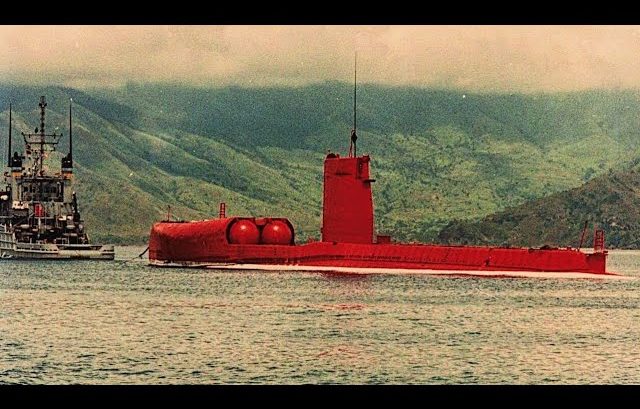During the early 1960s, recent developments in submarine technology have open a new front in the global nuclear standoff situation. Back then, Americans could easily detect Soviet silos and launch sites, intercepting any attempts. Supersonic interceptor fighters were also on standby, stopping the enemy from reaching population centers.
However, nuclear-armed fission-reactor-powered submarines could wander in the ocean for months silently. They could also operate on coasts in the US, preparing to unleash nuclear hail storms at any given time.
A whole new approach was needed, and thus, the NR-1 was born.
The World’s Smallest Nuclear-Powered Submersible
The NR-1 would eventually become the smallest nuclear-powered submersible in the world. This small silent hunter could scour seas looking for much bigger Soviet nuclear vessels.
The US backed this project as the only way to track the underwater menace of the Soviets, which could possibly lead to cataclysmic implications.
One of a Kind
The NR-1 is a nuclear-powered deep submergence submarine and can explore ocean depths up to 3,000 feet. It can also allow the world’s most continental shelves.
Roughly, her size is just about 1/16th of a Los Angeles-class submarine. While her small size limits her crew to just three officers and eight enlisted men, its exceptional endurance has allowed its crew to perform uninterrupted bottom operations that could lead up to 30 days and is only restricted by the food and air purification supplies on board.
Technical Breakthroughs
To achieve the project’s lofty goals, engineers started with a completely specialized reactor design explicitly made for the NR-1 project.
Also, designing a tiny nuclear submarine with the equivalent amount of shielding as a full-sized vessel would have been impossible. As such, the shielding configuration was wholly redesigned, leading to a single wall of led shielding that divided the crew compartments from the reactor compartment.
Slow and Silent
Its small reactor had the ability to operate silently underwater for months, but shrinking of the nuclear reactor technology came at a cost, and the propulsion system only produced 130 horsepower. This translated to a top speed of only five knots. Thus, the submarine’s lack of speed was a concern, especially if she encountered much faster enemy ships that she couldn’t outrun.
The NR-1 made up for its lack of speed with unparalleled maneuverability which was achieved thanks to several thrusters pointing in almost every direction possible.
Operation
Despite its ambitious goals, operating the NR-1 would prove to be much more challenging and impractical than previously calculated. The vessel was driven by a 10-man crew but she was ill-equipped to sustain the team for extended periods because she lacked shower facilities or a working kitchen.
Moreover, the necessary submarine oxygen recycling system and compressed air tanks could only function autonomously for a short time. Thus, it needs to be deployed to and from a specialized mothership tasked to replenish its systems. The most miniature nuclear submarine in the world was denied her most promising features, her independence, and her long-range capabilities.
Also, the sociopolitical situation at the start of the 1970s made it unfit for her task of tracking down Soviet Nuclear vessels. Despite it, it was heavily used for the following decades for highly classified missions whose specific nature has never been revealed.



